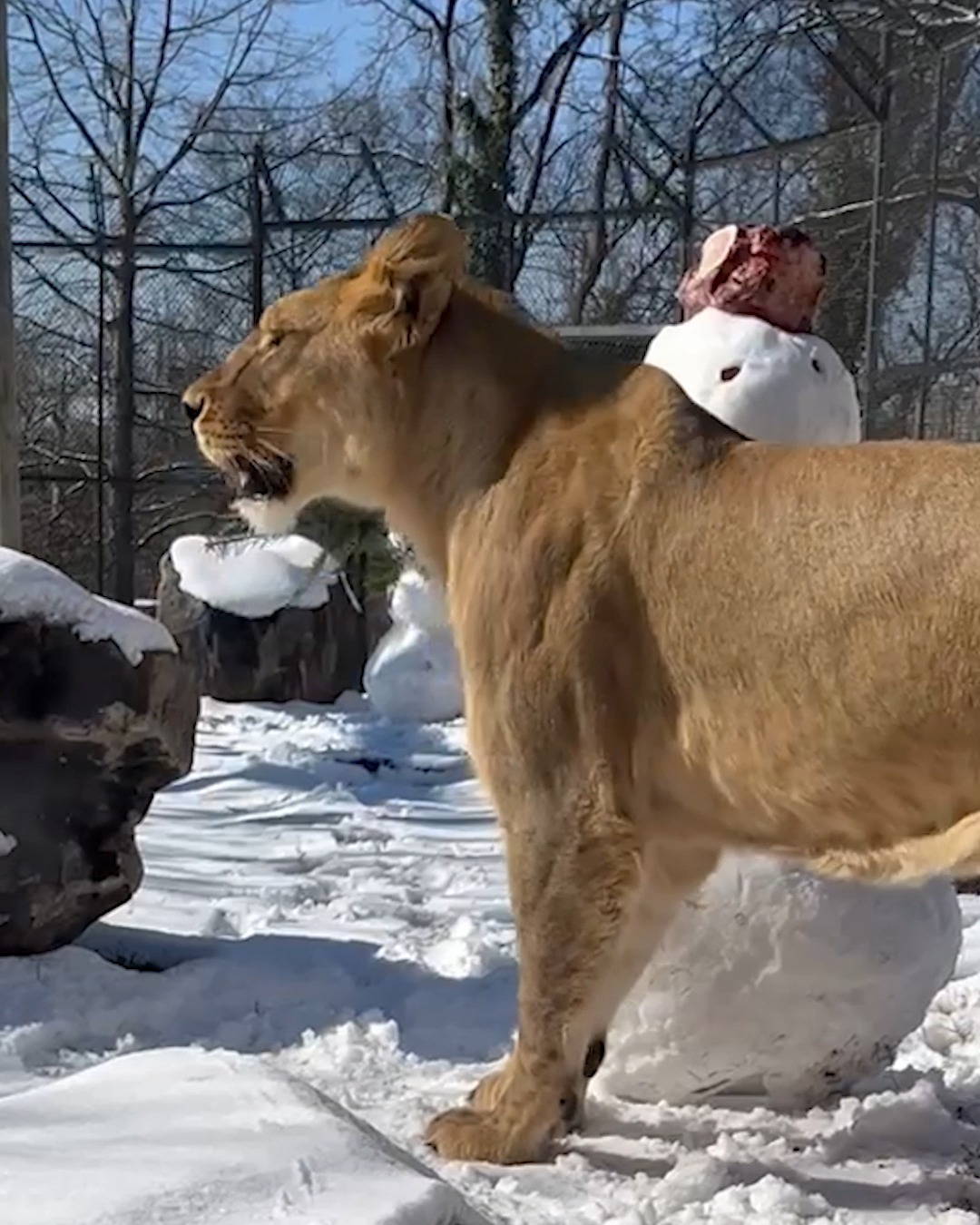- Interaction of animals with snow: Understanding how different species engage with snow and its impact on their behavior.
- The role of snow as environmental enrichment: Examining how snow can serve as an enrichment tool for animals in managed care.
- Case studies of animal behavior in snowy conditions: Highlighting specific instances of animals like silverback gorillas and painted dogs interacting with snow.
- The importance of environmental factors in zoo management: Exploring how natural elements like snow are integrated into the daily management and care of zoo animals.
- Insights on wildlife conservation and education: Discussing how these interactions contribute to broader conservation and educational goals within zoos.
Animals and snow form a fascinating interplay that showcases the diversity of behavioral adaptations across species. Snow, often seen as an inconvenience or a picturesque backdrop, serves as a critical environmental component that affects how animals in both the wild and managed care settings interact with their surroundings.
The presence of snow alters the animals’ behaviors and activates instincts rarely observed in milder climates. For example, many animals take advantage of snow to engage in behaviors not typically exercised, such as foraging, playful interaction, and social bonding. Observing these behaviors provides insight into the animals’ natural habits and adaptability. In zoos, bridging the connection between animals and their snowy environment helps enrich their lives, thereby promoting mental and physical well-being.
Snow is not just a seasonal phenomenon; it serves as an enrichment tool that enhances the quality of life for animals in zoos. Environmental enrichment is a crucial aspect of zookeeping that seeks to simulate the animals’ natural habitat to encourage natural behaviors. Snow offers a texture change, temperature variation, and a new platform for exploration and play. These alterations can elicit varied responses—from curiosity in some species to physical engagement in others.
To successfully integrate snow as an enrichment element, zoo management must strategically plan and monitor animal interactions. The implementation of snow-based enrichment activities is meticulously overseen to maintain the animals’ health and welfare. Enrichment initiatives leveraging snow can include building mounds for climbing, hiding food to encourage foraging behavior, or even constructing snowmen, which can be toppled and explored by curious creatures.
One captivating example of animal interaction with snow can be seen with Bantu, a silverback gorilla, and painted dogs. These creatures thrive on the novelty and challenges that snow introduces. Gorillas, like Bantu, display inquisitive behavior towards snow. This engagement provides a valuable opportunity to observe problem-solving skills and social dynamics within the troop. Painted dogs, known for their energetic and social nature, use the snow to enhance their play, which in turn strengthens social bonds and physical fitness.
The impact of snow on animal behavior provides valuable data for understanding how various species adapt to changing environmental conditions. This information can be applied to improve zoo management practices, ensuring that snow and other natural elements are integrated effectively into daily animal care routines. By observing and documenting animal engagement with snow, zookeepers gain insights into animal welfare and behavioral health, which can be used to develop more effective enrichment and care strategies.
Incorporating natural environmental elements like snow into zoo management practices contributes significantly to the field of wildlife conservation and education. When visitors witness animals interacting with snow, it creates an engaging educational experience that underscores the importance of preserving natural habitats. The knowledge gained from studying these interactions also feeds back into broader conservation efforts by deepening our understanding of species’ needs and behaviors in varying climatic conditions.
Moreover, zoos play a paramount role in educating the public about wildlife conservation. By presenting animals naturally enjoying snow, zoos foster a connection between visitors and wildlife that extends beyond the exhibit. This connection encourages public support for conservation initiatives and highlights the importance of protecting diverse habitats globally.
Through these interactions, zoos can convey crucial conservation messages and inspire a sense of responsibility and stewardship in their visitors. The educational aspect of these experiences goes beyond mere observation, serving as a tool to build awareness about the importance of biodiversity and habitat protection.
Animals’ interaction with snow offers a lens for exploring broader themes related to zoology, zoo management, and wildlife conservation. From the unique behavioral adaptations observed to the role of snow as a potent enrichment tool, there is much to learn and apply. These interactions underline the intricate relationship between animals and their environment, encouraging a continuous pursuit of knowledge and innovation within the realms of animal care and conservation.
*****
Source Description
❄️ There’s still a little snow on the ground, and our animals are making the most of it! From toppled snowmen to (prancing) painted dogs, everyone is having fun—even Bantu the silverback gorilla.😅


